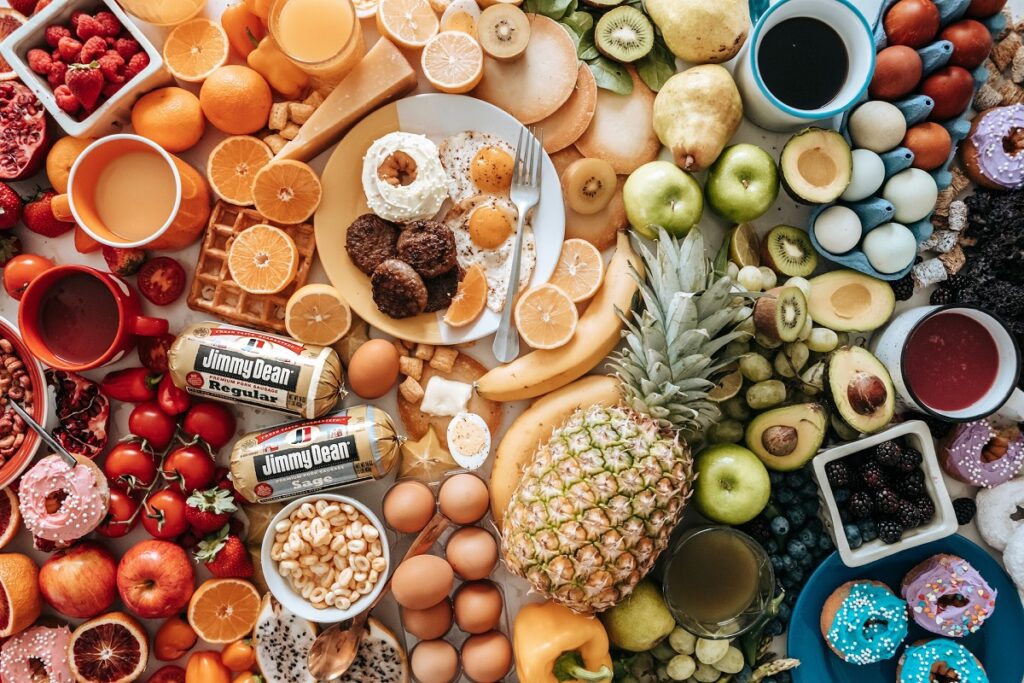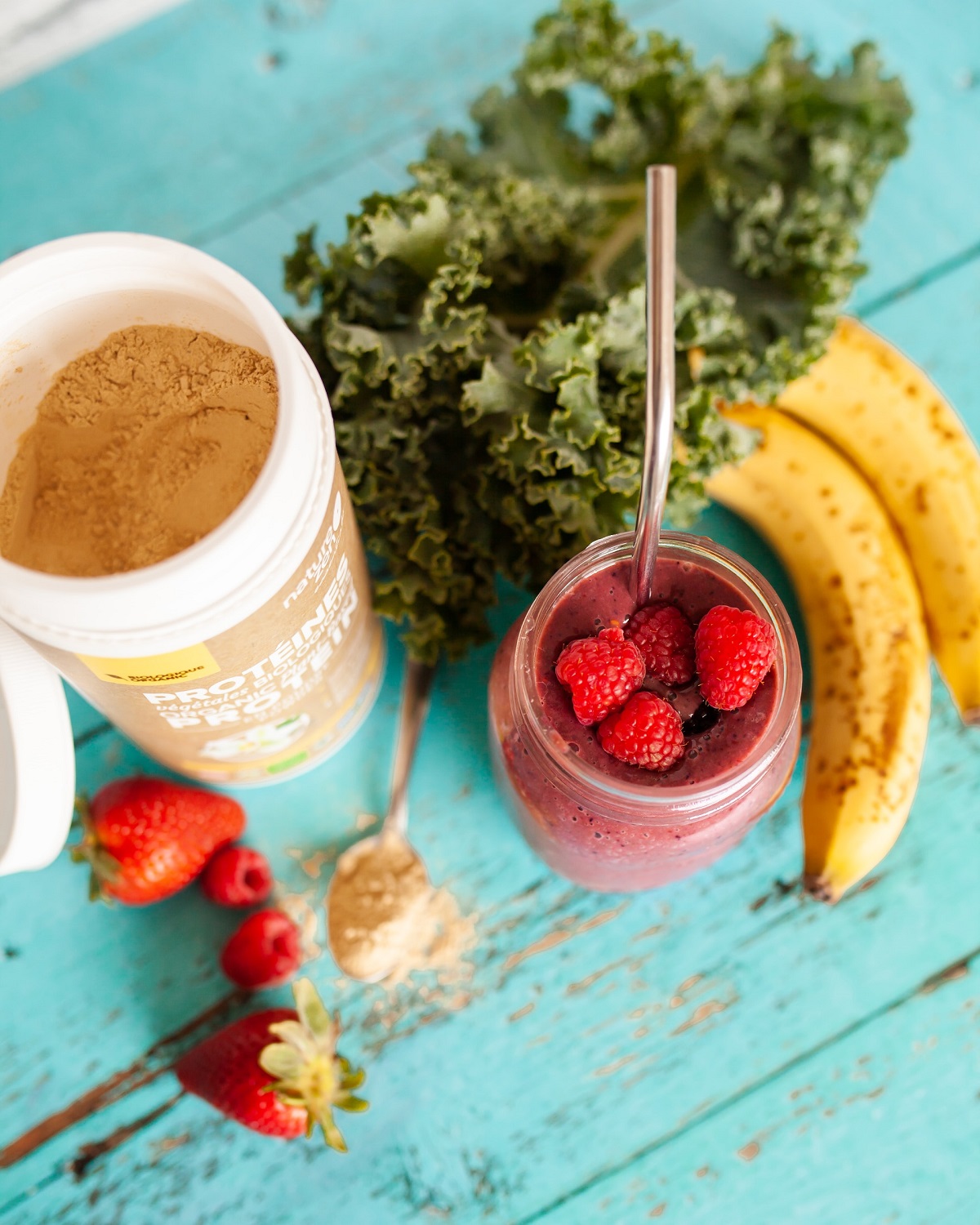Difference Between Complete vs Incomplete Protein
When it comes to keeping up a healthy diet, you have a lot on your plate. You are aware of the significance of consuming less sugar, getting enough vitamins, and avoiding processed foods. Is eating complete proteins really something you should be worrying about on top of it all?
The quick answer is if you’re following a flexible, healthful diet, it is probably not.
However, protein matters. Protein is necessary for our bodies to assemble muscle, carry nutrients, and create and repair tissue. It’s imperative that you obtain adequate. It doesn’t really matter if it comes from full or incomplete sources, though, as long as you’re eating a variety of meals high in protein.
Let’s explore the definition of protein, the distinction between complete vs incomplete protein, and how you might use this understanding to your fitness objectives.
What is Protein?

You’ve probably heard of protein in some capacity. However, gaining a deeper understanding of this nutrient will enable you to comprehend how and why increasing its intake in your diet benefits your fitness goals. One macronutrient that is present in the human body practically everywhere is protein. Your body needs about 10,000 different types of proteins to function, and these proteins are involved in every single one of the following:
- The development of nails and hair
- the maintenance and expansion of muscle mass
- The bloodstream’s role in oxygen transportation
- the body’s chemical reactions starting
- synthesis of bodily tissue
For those of us who are fitness enthusiasts, protein is an essential component of a diet that supports optimal performance because of its involvement in constructing muscle mass.
The Building Blocks of Proteins: Amino Acids
All living things are composed of amino acids, which are also the building blocks of the 10,000 distinct types of protein. A specific role for amino acids is played in the production of proteins.
The human body is primarily composed of proteins, which are essentially combinations of about 20 different amino acids. These amino acids must be available to us on a regular basis since they are vital building blocks for the creation of proteins.
The body can either create or get the amino acids needed for protein synthesis through nutrition.
The body is incapable of producing nine amino acids on its own. Since these are “essential” to human nutrition, they are referred to as essential amino acids. Leucine, isoleucine, histidine, lysine, phenylalanine, valine, tryptophan, methionine, and threonine are the nine essential amino acids.
The proteins that are so important to our bodies are made up of these amino acid combinations.
The nine essential amino acids:
The nine necessary amino acids listed below are what make some foods a total supply of protein:
- Histidine: contributes to the sleep-wake cycle, enhances digestion and sexual function, boosts immunity, and safeguards the nervous system.
- Isoleucine: strengthens immunity and contributes to energy production.
- Leucine:Leucine is essential for the synthesis of proteins, the repair of muscles, and the healing of wounds.
- Lysine: Lysine is necessary for protein synthesis, helps produce collagen, and facilitates calcium absorption.
- Methionine: Methionine enhances metabolism and aids in detoxification. It also aids the body’s absorption of minerals like zinc and selenium.
- Phenylalanine:As a building block for neurotransmitters, phenylalanine helps make other amino acids.
- Threonine: boosts immunological response, fortifies connective tissue, and enhances fat metabolism.
- Tryptophan: critical for mood, hunger, and sleep regulation.
- Valine: promotes the growth and repair of muscles and aids in the body’s energy production.
Complete Proteins:
A complete protein’s unique amino acid composition determines its “completeness.”
“Complete” proteins are those that include all nine of the essential amino acids that the human body is unable to produce on its own. Complete proteins guarantee that your body is getting all the nutrients it needs to survive when they are part of a diet that is appropriately balanced.
Depending on the particular cuisine, complete proteins might come from either plant or animal sources. A list of foods that give you complete proteins is provided below, however, it is not exhaustive:
- Eggs
- Beef
- Chicken
- Meat
- dairy goods, such as whey
- Fish
- Tofu
- Quinoa
- Bristle-head
- Tempeh
- Miso
- Edamame
Because complete proteins contain every type of amino acid your body needs from your diet, they serve as a one-stop shop for all things protein-related.
Incomplete Proteins:
Conversely, incomplete proteins are protein sources that lack some or all of the essential amino acids your body requires. Only a portion or none of the nine necessary amino acids in complete proteins are present in these types of proteins.
Plants are a common source of incomplete protein. Common instances consist of:
Legumes and beans, such as black beans, lentils, and chickpeas, among others
Peas Nuts (peanut butter included)
- Plants
- whole grains, such as brown rice
- veggies and other meals made from green plants
The intriguing thing about incomplete proteins is that, despite not having all the amino acids found in complete proteins, you may get all the amino acids you want by correctly combining specific incomplete proteins.
For instance, although each ingredient on its own is insufficient when combined, rice, beans, or peanut butter and bread make up a complete protein. We call these proteins complimentary.
Therefore, even though complete proteins are typically found in animal products, you can still get your fill of complete proteins from meatless options like the Three Sisters.
What Distinguishes Complete vs Incomplete Protein?
In essence, the nutritional composition of proteins determines whether they are complete or incomplete. Complete proteins are a more efficient source of protein because they have all the necessary components.
Nonetheless, incomplete proteins can nonetheless provide you with all the amino acids your body is unable to synthesize when taken in a deliberate manner.
Thus, a diet that provides the entire range of amino acids your body requires would be considered adequate.
The Advantages of Protein for Your Health:
For those of us pursuing increased fitness, getting the complete proteins our bodies require is essential. A diet rich in protein could benefit you:
- Boost your performance while exercising.
- Boost your stamina.
- Cut down on how long you need to recover after an exercise.
- Gain muscle mass more quickly.
Increased protein consumption has also been demonstrated to support weight loss. After eating, those who consumed more protein reported feeling more satisfied, or less hungry. This assisted them in controlling their overindulgence in food.
Increasing the amount of protein in your diet can help you make progress toward your fitness objectives. Gainful offers an excellent range of protein-satisfying supplements if you’re looking for a strategy to improve the amount of protein in your diet.
How Much Protein Should I Consume?
Given the importance of protein to your body, ensuring your diet has enough of it will guarantee that you are giving your body all the resources it needs to function at its peak.
Because we are all different shapes and sizes, our bodies require varied amounts of protein. You can get individualized guidance from a dietician as individual needs will differ. However, in general, 1-2 grams of protein per kilogram of body weight is thought to be the required daily allowance.
Naturally, you should consume enough protein if your exercise program calls for it in order to meet your objectives. This entails consuming more of the proteins your body requires for the best possible workout and recovery.
What occurs when you don't consume enough protein?
A severe health condition called as chronic protein deficiency can arise from a prolonged lack of protein in your diet. Your whole nutritional intake determines the precise state.
Lack of dietary proteins combined with insufficient caloric intake can lead to a disease known as kwashiorkor. This ailment, which is common in Ghana and is marked by poor skin, slower growth, and swelling of the feet and abdomen, is where the name originates.
You can acquire famine or marasmus if you don’t consume enough calories and proteins. You start to appear extremely wasted and skinny. This illness is prevalent in places where hunger, civil turmoil, and persistent poverty are prevalent. It mostly happens in America as a result of serious illnesses or the eating disorder anorexia nervosa.
The majority of Americans don’t have to worry about not getting enough protein because there are so many different sources of macronutrients. Rather, concentrate on incorporating a range of nutritious sources into a whole, balanced meal that will greatly enhance your general well-being and nutrition.
Negative Impacts of Excessive Protein Intake:
Consuming a diverse range of low-fat protein sources is recommended as a component of a well-rounded, healthful diet. You must be careful not to consume too much protein, though. A daily diet heavy in protein increases your chances of:
- Urinary stones
- If you eat a lot of red meat and other fatty protein sources, you run the risk of developing heart disease and colon cancer.
Certain individuals suffer from medical illnesses known as amino acid metabolic abnormalities, which are inherited from their parents. Their bodies are unable to adequately digest amino acids or to transport amino acids into their cells.
Supplements, medication, and special meal programs are available for the treatment of diseases related to the metabolism of amino acids. If any of these alternatives pique your curiosity, consult your physician.
Final words:
The concept of complete vs incomplete protein is clear and making informed dietary decisions requires knowing the distinction between full and partial proteins. Incomplete proteins are essential to a balanced diet just as much as complete proteins are because they provide a more thorough amino acid profile. You may get the health advantages of both kinds of protein and keep a balanced, nutrient-rich diet by including various protein sources in your meals.
FAQS:
Complete proteins are protein sources that have enough amounts of each of the nine necessary amino acids. They can be found in certain plant-based sources as well as foods derived from animals.
One or more necessary amino acids are absent from incomplete proteins, or they are present in insufficient amounts. They are frequently present in diets based on plants.
Yes, even from partial protein sources, you can receive all required amino acids by mixing complementary proteins.
The majority of plant-based proteins are insufficient, however, you can generate comprehensive protein profiles by mixing several plant-based sources.
No, combining proteins at every meal is not required. All of the required amino acids can be obtained by consuming a range of protein sources throughout the day.
Owing to their increased physical activity and rapid growth, athletes and children may require more protein. A combination of complete and incomplete protein sources can help persons in these groups satisfy their protein demands, even though complete proteins can be helpful.
Yes, eating a vegetarian or vegan diet will still provide you with enough protein. Protein comes from plant sources such as nuts, seeds, tofu, lentils, and beans. Protein profiles can be created in their entirety by combining these sources. To guarantee you get a range of protein sources and satisfy your nutritional demands, it’s crucial to organize your meals properly.


